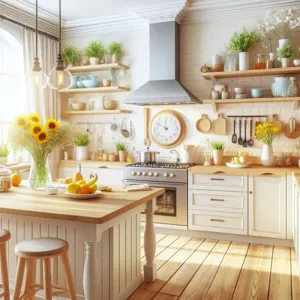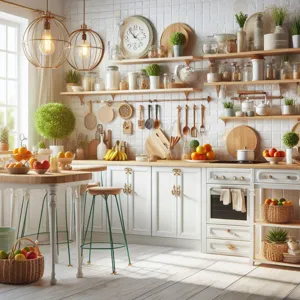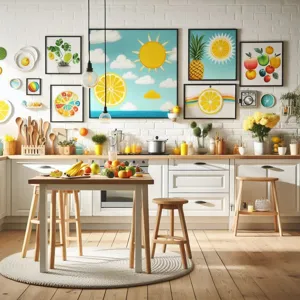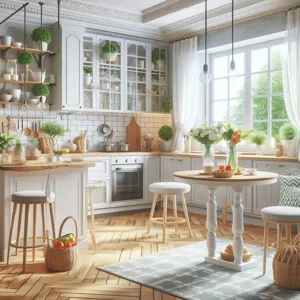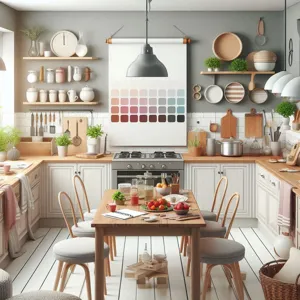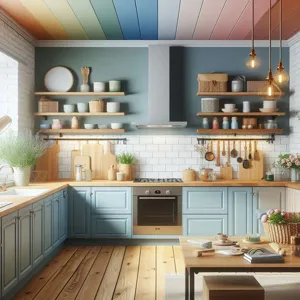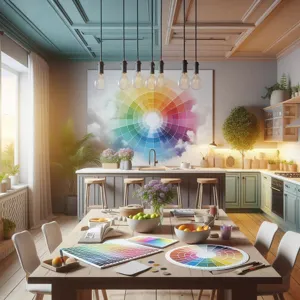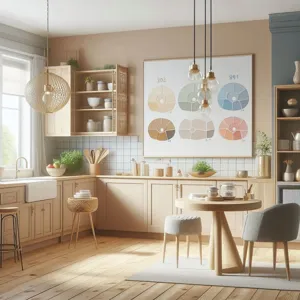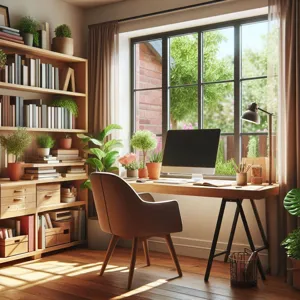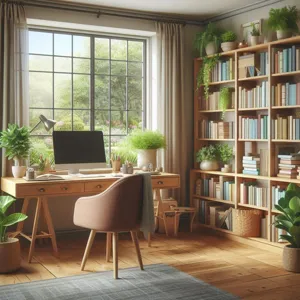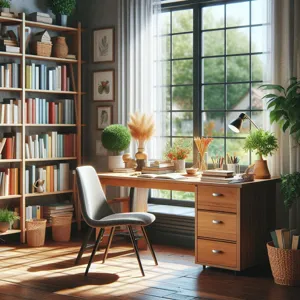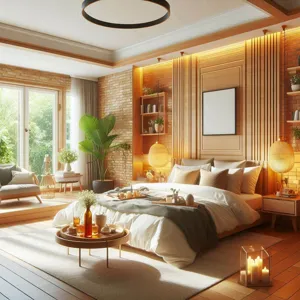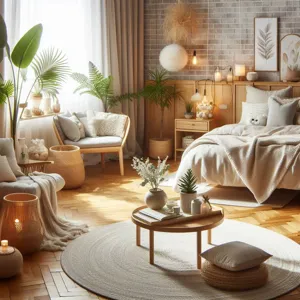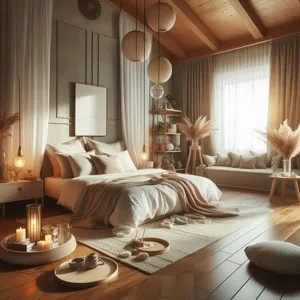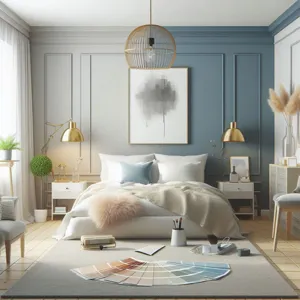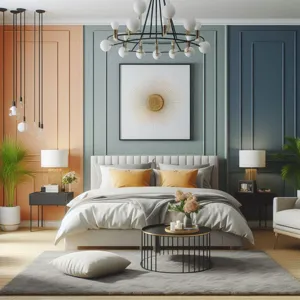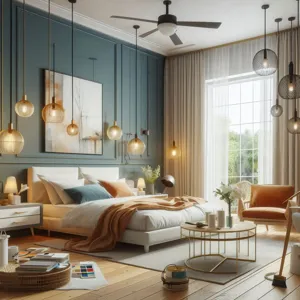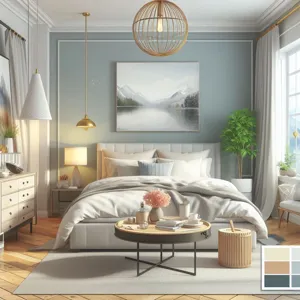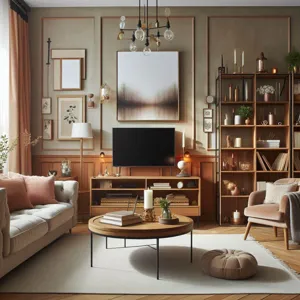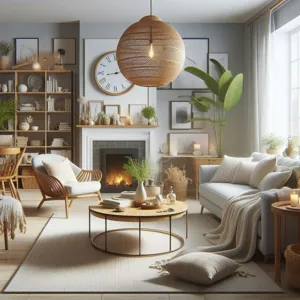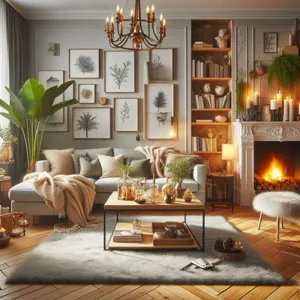Dialogue is the heartbeat of storytelling, a powerful tool that breathes life into characters and propels plots forward.
It is not merely a vehicle for communication; it is an intricate dance of words that reveals motivations, builds tension, and deepens connections between characters. In a world where readers crave authenticity and emotional resonance, mastering the art of dialogue can elevate your writing from mundane to memorable. In this blog post, we will explore the essential techniques and creative strategies for crafting conversations that not only sound natural but also serve a pivotal role in your narrative. From understanding subtext and pacing to utilizing dialogue tags and ensuring distinct character voices, we will dive deep into the nuances of effective dialogue that captivates readers and enriches your storytelling. Join us on this journey to unlock the potential of dialogue in your writing and discover how to create conversations that truly resonate.
1. Understanding the Importance of Dialogue in Storytelling

Dialogue is more than just characters exchanging words; it is a powerful tool that breathes life into your narrative, revealing character motivations, advancing the plot, and enhancing the overall emotional resonance of your story. When crafted thoughtfully, dialogue serves as a window into the characters’ minds, allowing readers to connect with their desires, fears, and conflicts on a deeper level. It can establish relationships, create tension, and set the tone—essentially acting as a driving force that propels the story forward.
Consider how realistic dialogue can transform a mundane scene into a gripping moment. For instance, a simple conversation between two characters can unveil hidden truths, escalate misunderstandings, or highlight contrasting perspectives. Through dialogue, you can show not only what characters say but also how they say it—intonations, pauses, and even silence can convey just as much meaning as the words themselves.
Moreover, dialogue can serve as a reflection of the world you’ve created. The way characters speak—whether it’s through formal, polished exchanges or casual, colloquial banter—can immerse readers in the setting, culture, and time period of your story. It helps build authenticity, making your characters relatable and realistic within their context.
Ultimately, effective dialogue is about more than just what is being said; it’s about how it shapes the narrative and deepens the reader’s investment in the characters and their journeys. By understanding and harnessing the importance of dialogue, you can craft conversations that not only engage but also propel your story to new heights.
2. The Role of Dialogue in Character Development
Dialogue serves as a powerful tool in character development, often revealing more about a character’s personality, motivations, and relationships than traditional narrative exposition ever could. When crafted thoughtfully, conversations can breathe life into characters, allowing readers to perceive their complexity and depth in a vivid, almost tangible way.
Consider how the choice of words, tone, and speech patterns can reflect a character’s background and emotional state. For instance, a character who speaks in short, clipped sentences may convey a sense of urgency or frustration, while another who employs elaborate, poetic language might suggest a more introspective or romantic nature. These nuances can subtly inform the reader of the characters’ histories and conflicts, enriching the story without the need for lengthy explanations.
Moreover, dialogue can illuminate the dynamics between characters, showcasing their relationships through the ebb and flow of conversation. The interplay of conflict and camaraderie, tension and intimacy, can all unfold through dialogue, allowing readers to witness the evolution of relationships in real-time. For example, a heated exchange between two friends that reveals underlying resentment can provide critical context for the unfolding narrative, while a lighthearted banter between lovers can deepen the emotional stakes.
In crafting dialogue, it’s essential to consider not just what is said, but how it’s said. Pauses, interruptions, and the rhythm of speech can add layers to character interactions, making them feel authentic and relatable. A well-placed silence can speak volumes, revealing a character’s hesitation or unresolved feelings, while overlapping dialogue can create a sense of urgency or chaos in a scene.
Ultimately, dialogue is not merely a means to convey information; it is a vital component that propels character development and enriches storytelling. By mastering the art of dialogue, writers can create compelling characters that resonate with readers, drawing them into the heart of the narrative and leaving a lasting impression long after the final page is turned.
3. Types of Dialogue: Expository, Internal, and Subtext

When it comes to dialogue in storytelling, understanding the different types can significantly enhance the depth and richness of your narrative. Let’s delve into three essential types of dialogue: expository, internal, and subtext, each serving a unique purpose in propelling your story forward.
**Expository Dialogue** is the backbone of storytelling, providing the necessary information that helps the reader understand the plot, setting, and characters. It’s the type of dialogue that fills in the gaps, often revealing backstory or critical plot points without feeling forced. For instance, when two characters discuss a past event that led to their current predicament, they not only share essential context but also allow the reader to connect the dots. The key to effective expository dialogue is balance; it should flow naturally and feel intrinsic to the characters’ interactions rather than sounding like a textbook lecture.
**Internal Dialogue**, on the other hand, offers a glimpse into a character’s thoughts and feelings, adding layers to their personality and motivations. This type of dialogue can be presented in various ways, from direct thoughts woven into the narrative to italicized reflections that stand apart from spoken words. Internal dialogue allows readers to experience the character’s inner conflicts and desires, creating empathy and a deeper understanding of their actions. For example, as a character wrestles with a tough decision, their internal monologue can convey doubts and hopes, drawing readers closer to their emotional journey.
Finally, **Subtext** is the unsaid—the underlying meaning that exists beneath the surface of spoken dialogue. It adds complexity and intrigue, as characters may say one thing while implying another, often revealing their true intentions or feelings. Mastering subtext requires skill; it involves crafting dialogue that feels natural yet layered. Think of a conversation where two characters discuss the weather, but their underlying tension hints at unresolved issues between them. This subtlety can create a rich tapestry of meaning that invites readers to engage more deeply with the text, prompting them to read between the lines.
By thoughtfully incorporating expository dialogue, internal dialogue, and subtext into your writing, you can create conversations that not only advance your plot but also develop your characters and engage your readers on multiple levels. Embrace these types of dialogue as tools in your storytelling arsenal, and watch as your narrative becomes more vibrant and compelling.
4. Building Authentic Voices for Your Characters
In the realm of storytelling, the voices of your characters serve as the heartbeat of your narrative. Crafting authentic voices is crucial not only for character development but also for engaging your readers in a meaningful way. Each character should possess a distinct voice that reflects their background, personality, and motivations, creating a tapestry of dialogue that feels real and relatable.
To achieve this, start by delving deep into the intricacies of your characters. Consider their age, culture, education, and experiences. A seasoned detective will speak differently than a rebellious teenager, and their dialogue should mirror those differences. Pay attention to their word choice, sentence structure, and even the rhythm of their speech. Does your character use slang or formal language? Do they interrupt others or allow conversations to flow smoothly? These nuances can significantly impact how your audience perceives each character.
Listening to real conversations can be an invaluable tool. Eavesdrop (discreetly, of course) on the dialogues around you—how do people communicate in different social settings? Take note of idiosyncrasies, accents, and speech patterns. This observational practice can inspire you to craft dialogue that feels genuine and true to life.
Moreover, it’s important to give each character a unique perspective on the world. Their dialogue should not only reflect their personality but also their internal conflicts and desires. A character’s voice can reveal their fears, hopes, and motivations, propelling your story forward in ways that simple exposition cannot. When your characters speak in authentic, distinctive voices, readers are more likely to connect emotionally with them, enhancing the overall impact of your story.
Finally, don’t shy away from revising dialogue. Writing authentic voices is a process that often requires refinement. Read your dialogue out loud to see how it resonates. Does it sound like something a real person would say? Is it consistent with the character’s established voice? Taking the time to polish and perfect dialogue can transform a good story into an unforgettable one, inviting readers to immerse themselves in the rich, vibrant world you’ve created.
5. Techniques for Writing Natural-Sounding Conversations

Crafting dialogue that feels authentic and engaging is an art form that can elevate your storytelling to new heights. Natural-sounding conversations breathe life into your characters and help immerse your readers in the world you’re creating. Here are some key techniques to master this essential skill:
1. **Listen to Real Conversations**: One of the best ways to understand how people communicate is to listen to them in real life. Pay attention to the nuances of speech, such as interruptions, unfinished thoughts, and the ebb and flow of dialogue. Notice how people use informal language, slang, and regional expressions. This can inspire you to create more relatable and believable character interactions.
2. **Use Subtext**: Real conversations often have layers of meaning beneath the surface. People don’t always say exactly what they mean, and sometimes their true feelings or intentions are hidden. Incorporate subtext in your dialogue to create tension and intrigue. For example, a character might say, “I’m fine,” but their tone or body language suggests otherwise, hinting at underlying conflict.
3. **Vary Sentence Length and Structure**: Just like in real life, conversations in your writing should have a natural rhythm. Mix short, punchy sentences with longer, more complex ones to reflect how people actually speak. This variation helps to maintain a dynamic flow and keeps readers engaged. Be mindful, though; avoid overly long monologues that can draw the reader out of the moment.
4. **Embrace Interruptions and Overlaps**: In real conversations, people often talk over each other or interrupt one another. This reflects the urgency of communication and the excitement of a lively discussion. Incorporating interruptions can make your dialogue feel more genuine and spontaneous, bringing authenticity to your scenes.
5. **Stay True to Your Characters**: Each character should have a unique voice that reflects their personality, background, and experiences. Consider their age, education, and cultural influences when crafting their speech patterns. A witty, sarcastic character might use humor and irony, while a more serious character might opt for straightforward language. Consistency in their dialogue will make them more believable and memorable.
By employing these techniques, you can create conversations that not only sound natural but also propel your story forward. Remember, dialogue is not just about what is said; it’s a vehicle for revealing character, advancing the plot, and engaging your readers in the journey you’re creating. So, listen closely, write authentically, and let your characters speak their truths!
6. Balancing Dialogue with Narrative: Finding the Right Mix
Striking the perfect balance between dialogue and narrative is an essential skill for any writer looking to propel their story forward. Dialogue breathes life into characters, allowing them to express their thoughts, emotions, and motivations in a way that feels authentic and relatable. However, if overused or poorly integrated, dialogue can lead to confusion or disrupt the story’s flow. Conversely, narrative provides the necessary context, setting, and internal reflections that ground readers in the world you’ve created, but too much can slow the pace and dilute the immediacy of the action.
To find the right mix, consider the pacing of your story. Fast-paced scenes, such as a thrilling chase or a heated argument, often benefit from snappy, rapid-fire dialogue that propels the action forward. On the other hand, quieter moments of introspection or exposition may require more narrative to deepen character development and enhance the emotional stakes.
One effective strategy is to weave dialogue seamlessly into your narrative. Use descriptive tags and body language to enhance conversations, offering readers visual cues that convey the tone and mood. For instance, rather than simply stating, “She was angry,” you might write, “Her voice trembled, low and sharp, as she snapped, ‘I can’t believe you did that.’” This not only conveys the character’s emotion through dialogue but also enriches the narrative with context and tension.
Experiment with different ratios of dialogue to narrative throughout your draft. In scenes heavy with action or confrontation, lean more into dialogue to maintain urgency. In moments of reflection or world-building, shift focus to narrative. Ultimately, the key is to ensure that both elements serve the story, enhancing the reader’s experience and keeping them engaged. By mastering this delicate balance, you’ll create more dynamic and compelling storytelling that resonates with your audience.
7. Using Dialogue to Reveal Conflict and Tension

Dialogue is one of the most potent tools in a writer’s arsenal, especially when it comes to unveiling conflict and tension within a story. It’s not just about characters exchanging pleasantries or sharing plot information; it’s about capturing the nuances of human interaction that can drive a narrative forward and keep readers on the edge of their seats.
When crafted effectively, dialogue can serve as a battleground where opposing viewpoints clash, revealing underlying conflicts that may not be immediately apparent. For example, consider a heated exchange between two characters with differing motivations—perhaps a parent and a rebellious teenager. Their conversation might start with seemingly innocuous comments, but as emotions escalate, the dialogue can peel back layers of frustration, disappointment, and longing, drawing the reader deeper into the emotional stakes at play.
Tension can also be cultivated through subtext in dialogue, where what is said is often overshadowed by what remains unsaid. A character might express a desire for peace, while their tone, body language, or the context of the conversation suggests otherwise. This kind of layered communication invites readers to engage critically with the text, prompting them to read between the lines and uncover the deeper conflicts simmering just beneath the surface.
Moreover, pacing plays a crucial role in using dialogue to escalate tension. Quick exchanges with short, clipped responses can create a sense of urgency, while longer, more drawn-out dialogues can evoke a sense of dread or anticipation. A well-timed pause or interruption can amplify the stakes, leaving readers hanging on the edge of their seats, eager to see how the conflict unfolds.
In essence, dialogue is not merely a vehicle for communication but a dynamic force that can reveal character motivations, advance the plot, and create a rich tapestry of tension and conflict. By honing the craft of dialogue, writers can masterfully propel their stories forward, ensuring that readers remain captivated by the unfolding drama.
8. Crafting Subtext: What’s Left Unsaid
In the intricate dance of dialogue, what remains unsaid often speaks louder than the words themselves. Crafting subtext—those layers of meaning that lie beneath the surface of conversations—can transform ordinary exchanges into powerful moments that propel your story forward. Subtext adds depth and complexity, allowing readers to engage with your characters on a more profound level.
Imagine a scene where two characters meet for coffee. On the surface, their conversation might revolve around mundane topics: the weather, upcoming plans, or recent movies. However, if you infuse the dialogue with subtext, tension can simmer just below the surface. Perhaps one character is secretly grappling with a life-changing decision that they’re hesitant to reveal, while the other is oblivious, chattering away with cheerful ignorance. The reader can feel the weight of what isn’t being said—the unspoken fears, the hidden resentments, the longing for connection. This emotional undercurrent makes the dialogue richer and more engaging.
To effectively craft subtext, consider the motivations and backgrounds of your characters. What are they really trying to convey? What thoughts or emotions are they avoiding? Use body language, tone, and pauses to hint at these unspoken truths. A character’s nervous fidget, a lingering silence before a response, or a pointed glance can all serve to reinforce the subtext, drawing readers deeper into the narrative.
Ultimately, mastering subtext allows you to create layered conversations that resonate with your audience. It invites readers to read between the lines, fostering a connection that keeps them invested in your characters and their journeys. By leaving certain things unsaid, you not only enhance the dialogue but also create a more immersive storytelling experience. In the world of fiction, sometimes the most powerful words are those that are never spoken.
9. The Power of Pauses: Effective Use of Silence
In the realm of dialogue, pauses are often the unsung heroes, wielding a power that can dramatically influence the tone and emotional weight of a conversation. When crafted skillfully, silence can speak volumes, creating tension, emphasizing a point, or allowing characters—and readers—to process what has just been said.
Imagine a heated exchange between two characters, each grappling with their emotions. A well-placed pause can heighten the intensity of their conflict, as the silence swells with unspoken thoughts and feelings. In these moments, the absence of words can be more telling than any line of dialogue. It invites the reader to lean in, to consider the implications of what’s left unsaid, and to feel the palpable tension in the air.
Additionally, pauses can serve as a moment of reflection for both characters and readers alike. After a significant revelation or a pivotal moment, allowing a pause can provide the necessary space for the weight of the dialogue to sink in. It encourages empathy and invites the audience to connect with the characters on a deeper level, fostering a richer understanding of their motivations and conflicts.
In practice, you might use ellipses to denote a thoughtful or lingering silence, or a simple line break to indicate a shift in pace. Consider how your characters might react during these moments of silence: do they fidget, hold their breath, or steal glances at one another? Such details can add layers to your narrative, making the dialogue not just a means of communication, but a dynamic element that propels your story forward.
Ultimately, mastering the art of dialogue is not just about what is said, but also about what is left unsaid. By harnessing the power of pauses, you can create conversations that resonate with depth and authenticity, ensuring your readers remain engaged and invested in the unfolding drama of your story.
10. Pacing Your Dialogue for Maximum Impact
Pacing your dialogue is a crucial element in crafting conversations that not only resonate with your readers but also propel your story forward with urgency and emotion. Just like a skilled conductor leads an orchestra, the rhythm and flow of your dialogue can create tension, release, and everything in between.
When characters exchange words, consider how the speed of their speech impacts the scene. Quick, snappy dialogue can convey excitement or conflict, creating a sense of urgency that keeps readers on edge. Picture a heated argument where characters cut each other off, speaking over one another in a flurry of emotions. The dialogue here should reflect their heightened states, using short sentences and fragmented thoughts to mirror the chaos of the moment.
Conversely, slower-paced dialogue can enhance moments of reflection or intimacy. Think about a tender conversation between two characters rekindling an old romance. Here, pauses and longer exchanges allow for contemplation and vulnerability, inviting the reader to linger in the moment. Use ellipses or breaks in speech to signify hesitation, giving your audience a chance to absorb the weight of the characters’ words.
Effective pacing also involves interspersing dialogue with action and description. A character may say something profound, but what they do while speaking can amplify the impact of their words. A character gripping their coffee cup tightly as they confess a secret, for example, adds a layer of tension and physicality to the dialogue, enriching the reader’s experience.
Ultimately, mastering the pacing of dialogue means understanding the emotional currents at play in your scene. By varying the speed and rhythm of conversations, you can create a dynamic narrative that keeps readers engaged, drawing them deeper into the lives of your characters and the world you’ve created. So, whether it’s a fast-paced confrontation or a slow, tender exchange, pay close attention to how pacing can elevate your dialogue and propel your story forward in powerful ways.
11. Editing Dialogue: Cutting the Clutter
Editing dialogue is a crucial step in the writing process that can elevate your storytelling to new heights, transforming a good conversation into a captivating exchange. Just like a sculptor chisels away excess stone to reveal a masterpiece, writers must cut the clutter from their dialogue to ensure each line serves a purpose. Excessive words, redundant phrases, and unnecessary exposition can weigh down your characters and muddle the flow of your narrative.
As you review your dialogue, consider the essence of each exchange. Ask yourself: Does this line contribute to character development, advance the plot, or enhance the emotional stakes? If the answer is no, it’s time to trim the fat. Strive for brevity and clarity—characters often don’t speak in perfect sentences; they interrupt, trail off, and convey meaning through subtext. Embrace the rhythm of natural speech while honing in on the underlying intentions behind their words.
Moreover, pay attention to the unique voices of your characters. Each one should have a distinct way of speaking that reflects their background, personality, and mood. By cutting out repetitive dialogue and ensuring that each character’s voice is authentic, you can create more engaging and believable interactions that draw readers deeper into your story.
Finally, remember that silence can be just as powerful as words. Moments of pause or hesitation can add tension and depth to a scene, allowing readers to feel the weight of unspoken thoughts. By editing dialogue thoughtfully, you not only enhance the clarity and impact of your conversations but also create a more immersive experience that propels your story forward, keeping readers on the edge of their seats.
12. Real-Life Inspiration: Observing Conversations Around You
One of the most effective ways to enhance your dialogue writing is to immerse yourself in the conversations happening all around you. Real-life interactions offer a treasure trove of inspiration, providing authentic nuances that can breathe life into your characters and their exchanges. Pay attention not only to the words being spoken but also to the non-verbal cues—body language, facial expressions, and tone of voice—that add depth and meaning to each conversation.
Consider visiting bustling cafes, vibrant parks, or even quiet libraries where people gather. Sit back, observe, and listen. Notice how different groups converse: friends sharing laughs, colleagues debating ideas, or strangers exchanging pleasantries. Each interaction carries its own rhythm and personality, revealing how context influences dialogue.
Take mental notes of unique phrases, regional dialects, or idiosyncratic speech patterns that intrigue you. Perhaps you’ll catch a witty remark or an emotional exchange that resonates with a theme in your story. You might even find inspiration in the pauses or overlaps in conversation, which reflect the natural ebb and flow of real-life dialogue.
Additionally, engaging in your own conversations—whether with friends or strangers—can provide insights into how people express themselves and react to one another. Ask open-ended questions and observe how discussions unfold. The more you attune your ear to the dynamics of human interaction, the more authentic your dialogue will become. By integrating these observations into your writing, you’ll create conversations that feel genuine, relatable, and ultimately propel your story forward, drawing readers deeper into the world you’ve crafted.
13. Dialogue Tags and Their Impact on Readability
Dialogue tags play a crucial role in enhancing the readability of your story, guiding readers through conversations with clarity and fluidity. These simple yet powerful tools—think phrases like “he said” or “she asked”—help ground your readers in the narrative and clarify who is speaking. However, the effectiveness of dialogue tags extends far beyond mere identification; they can significantly influence the pacing, tone, and emotional weight of your exchanges.
When used judiciously, dialogue tags can enrich the reading experience. For instance, opting for a straightforward “she said” can keep the focus on the dialogue itself, allowing the characters’ words to shine through without distraction. In contrast, vivid alternatives like “he whispered” or “she exclaimed” can infuse the conversation with emotion and urgency, subtly informing the reader of the characters’ feelings and intentions.
However, it’s essential to strike a balance. Overly ornate or unconventional tags can pull readers out of the narrative, causing confusion instead of clarity. An abundance of experimental tags might lead to a jarring reading experience, where the focus shifts from the dialogue to the mechanics of the writing. Therefore, it’s often best to reserve creative tags for moments when you want to highlight a particular emotional beat or add depth to the interaction.
Moreover, consistency in your tagging style can help maintain the flow of your dialogue. Mixing in different styles can create a disjointed reading experience, whereas a more streamlined approach can enhance the overall cohesion of your story. As you experiment with dialogue tags, consider how they can not only serve as a bridge between speakers but also contribute to the mood and rhythm of your scenes.
Ultimately, well-crafted dialogue tags are the unsung heroes of storytelling. They may seem like small details, but their impact on readability can elevate your narrative, making it more engaging and enjoyable for your readers. So, as you pen your next conversation, remember that each tag is a brushstroke on the canvas of your story—use them thoughtfully to create a masterpiece that resonates with your audience.
14. Common Dialogue Pitfalls and How to Avoid Them
Crafting dialogue that feels authentic and serves a purpose can be a challenge, and even seasoned writers often stumble into common pitfalls. Identifying these missteps is crucial for ensuring your conversations not only sound realistic but also propel your story forward. Here are some prevalent dialogue pitfalls and tips on how to avoid them:
**1. Exposition Overload:**
One of the biggest traps writers fall into is using dialogue as a means to dump information on the reader. Characters may sound unnatural when they start explaining backstory or plot points in a way that feels forced. To avoid this, sprinkle exposition naturally throughout your narrative. Instead of having a character say, “As you know, we’ve been best friends since kindergarten,” let their shared history emerge through actions and subtle references during a conversation.
**2. Monologues and Overly Long Speeches:**
While characters may have strong feelings about certain topics, excessively long speeches can derail the pacing of your story. Dialogue should mimic real-life conversations, which are often characterized by back-and-forth exchanges. To maintain engagement, break longer speeches into manageable chunks and encourage other characters to interject, ask questions, or react emotionally, keeping the rhythm lively and dynamic.
**3. Lack of Distinct Character Voices:**
If all your characters speak in the same tone and style, it can be challenging for readers to connect with them. Each character should have a unique voice that reflects their personality, background, and motivations. To develop distinct voices, consider their age, education, and life experiences. Read your dialogue aloud to see if it sounds authentic to each character; this will help you catch any similarities that need tweaking.
**4. Using Dialogue as a Crutch:**
Relying too heavily on dialogue can lead to a lack of depth in your narrative. While conversations are essential for character development and plot advancement, they should be balanced with action, description, and internal thoughts. Use dialogue to enhance your storytelling, not replace other narrative devices. For instance, instead of having a character say, “I’m nervous,” show their anxiety through body language or internal monologue, then follow it with dialogue that reflects their emotional state.
**5. Forgetting Subtext:**
Often, the most powerful moments in dialogue occur beneath the surface. Characters may say one thing but mean another, creating tension and intrigue. Be mindful of what your characters aren’t saying, as well as what they are. Use pauses, hesitations, or conflicting statements to suggest deeper emotions and conflicts, inviting readers to engage with the underlying motives and unspoken thoughts.
By being aware of these common dialogue pitfalls and actively working to avoid them, you’ll craft conversations that not only feel true to your characters but also enrich your narrative. Employing these strategies will help you create dialogue that resonates with your readers and propels your story forward with authenticity and depth.
15. Exercises to Enhance Your Dialogue Writing Skills
Improving your dialogue writing skills is not just about knowing the rules – it’s about breaking them effectively to create authentic, engaging conversations that resonate with readers. Here are some exercises designed to sharpen your dialogue skills and infuse your writing with life and vibrancy.
**1. Character Interviews:** Take the time to conduct interviews with your characters. Write out a list of questions that delve into their backgrounds, motivations, fears, and desires. Allow your characters to respond in their own unique voices. This exercise not only helps you understand their perspectives better but also aids in developing distinct dialogue patterns that reflect their individuality.
**2. Eavesdropping Practice:** Spend an afternoon in a public place—like a café or a park—and listen in on the conversations happening around you. Jot down snippets of dialogue that catch your ear. Pay attention to the rhythm, tone, and nuances of how people speak. This exercise will help you grasp the fluidity of real-life conversation and inspire authenticity in your writing.
**3. Rewrite Scenes:** Take a scene from a favorite book or movie and rewrite the dialogue. Try to maintain the same emotional weight but change the context or the characters involved. This exercise challenges you to think creatively about how dialogue shapes a scene and how different voices can alter its impact.
**4. Dialogue Prompts:** Set a timer for 10 minutes and write a dialogue between two characters about a mundane topic, like what to eat for dinner, but infuse it with underlying tension or humor. This exercise encourages you to explore how subtext can elevate seemingly trivial conversations and adds depth to your characters.
**5. Read Aloud:** After crafting a dialogue scene, read it out loud. This will help you catch awkward phrasing and unnatural rhythms. Pay attention to how your dialogue flows and how it sounds when spoken. If it feels clunky or stilted, it’s a sign that revisions are needed.
**6. Focus on Body Language:** Write a dialogue scene that includes no speech tags or descriptions—only dialogue. Afterward, rewrite the scene by adding in body language and actions. This helps you see how non-verbal cues can enhance dialogue and convey emotions that words alone may not fully express.
By regularly engaging in these exercises, you’ll not only enhance your dialogue writing skills but also deepen your understanding of your characters and their dynamics. The goal is to create conversations that don’t just advance the plot, but also resonate emotionally with your readers, drawing them deeper into the world you’ve crafted.
In conclusion, mastering the art of dialogue is an essential skill for any writer looking to breathe life into their characters and propel their story forward. By implementing the strategies outlined in this post—balancing realism with purpose, developing distinct voices for each character, and using subtext to add depth—you can transform your conversations into powerful tools that enhance your narrative. Remember, dialogue is not just about what characters say, but how they say it and what lies beneath the surface. As you embark on your writing journey, keep experimenting and refining your dialogue techniques, and watch how your stories become richer, more engaging, and unforgettable. Embrace the power of conversation, and let it lead your characters—and your readers—on an extraordinary journey. Happy writing!

